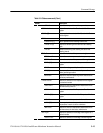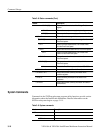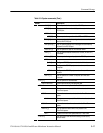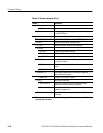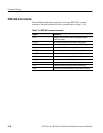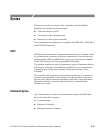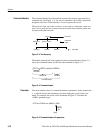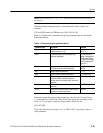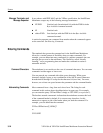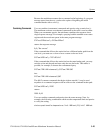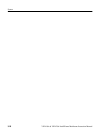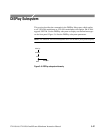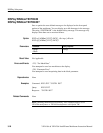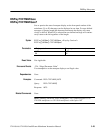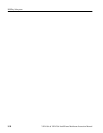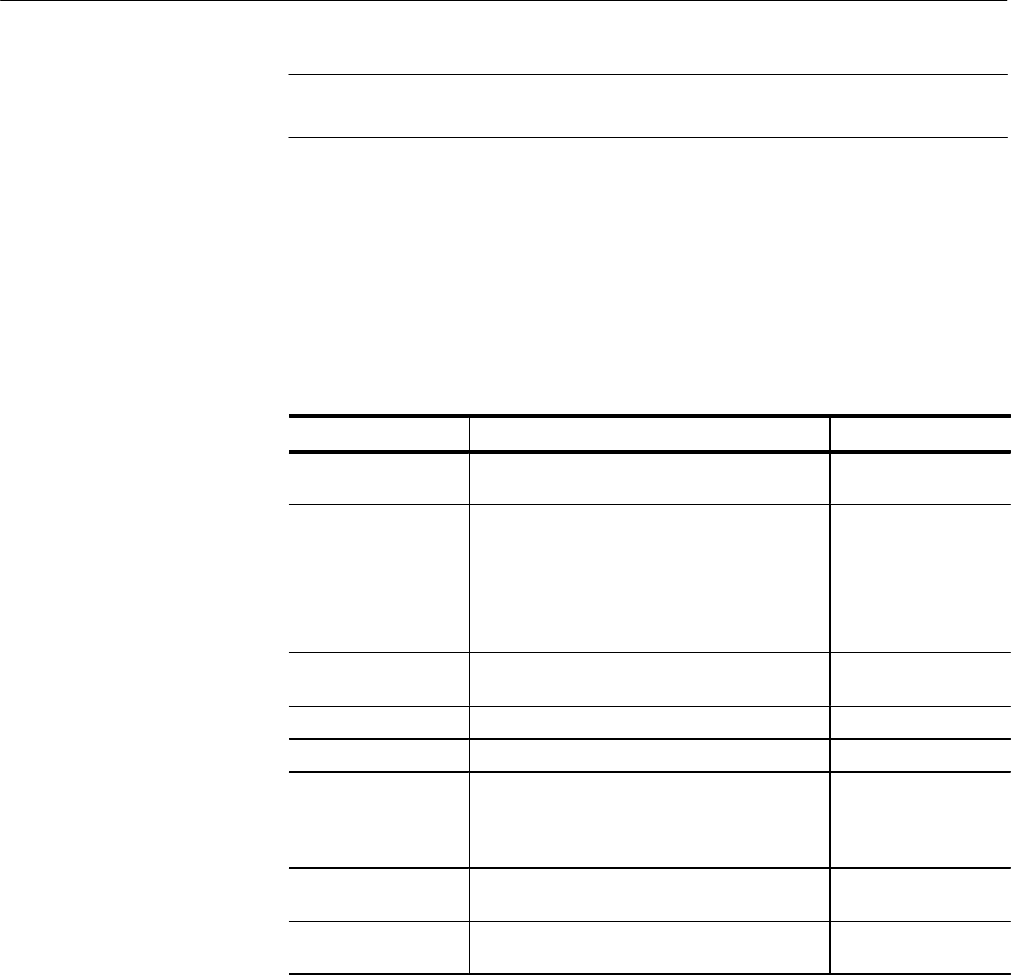
Syntax
VX1410A & VX1420A IntelliFrame Mainframe Instruction Manual
3–23
NOTE.
Do not include the <, >, {,}, or | symbols when entering the actual value for
a parameter.
Separate multiple parameters after a command header with a comma. For
example:
STATus:QUEStionable:TEMPerature:LIMit DELTa1,30
Table 3–13 defines the command and response parameter types for the Intelli-
Frame Mainframe.
Table 3–13: Parameter types for syntax descriptions
Parameter type
Description Example
Boolean Boolean number or value (command parameter,
response returns a 1 or 0)
ON or 1
OFF or 0
Block A specified length of block-formatted data
(command parameter)
#212xxxxxxxxxxxx
where 2 indicates that
the following 2 digits
(12) specify the length
of the following block
data (xxx...)
Nondecimal numeric Integers in hexadecimal (#H), octal (#Q), or
binary (#B) format (command parameter).
#H00FF, #B010101,
#Q0753
NR1 Integers (response parameter) 0, 1, 15
NR2 Decimal numbers (response parameter) 1.2, 3.141516, 6.5
NRf Integer, decimal, or floating point number as well
as MAX and MIN for setting the largest or
smallest value the instrument allows. (command
parameter)
1, 3E+1, MAX, 2.6
discrete A list of specific values (command or response
parameter)
P24, P5EXT, N2, ...
String Alphanumeric characters within quotation marks
(command or response parameter)
“No error”
Parameter values that appear in this manual are often enclosed in curly braces
({}) separated by a vertical line. This vertical line means the same thing as the
word “or.” For example, values for the parameter <Boolean> are
{0|1|OFF|ON}
This is the same thing as saying “0 or 1 or OFF or ON.” Any single value is a
valid parameter.



